Remote Waters: Loch nan Stuirteag
- Details
- Published on Friday, 20 November 2009 17:53
- Written by Fred Carrie
 In Scotlandthere are many remote, hard to get to lochs, then there are some that are out there in a class of their own. Loch nan Stuirteag, most definitely falls into this later category
In Scotlandthere are many remote, hard to get to lochs, then there are some that are out there in a class of their own. Loch nan Stuirteag, most definitely falls into this later category
with a 10 mile walk-in over rough and often boggy terrain and a climb of over 2000 feet, not including the many ups and downs
in between; a visit to this loch is for the fit, keen or stupid only.
I have to be honest at the outset and say I did not catch a damned thing when I visited this wonderful area of Scottish montane tundra, so if you are only interested in fish catching triumphs you can stop reading right now. If however you are interested in reading about a bit of modest exploration in remote, wild country then read on.
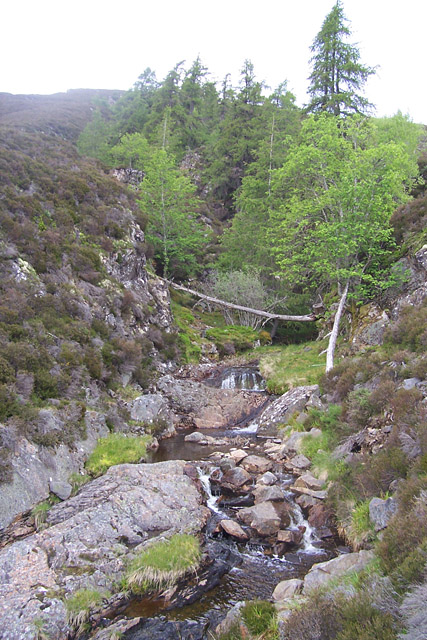 The more astute may have noticed I use the term "exploration" rather than "fishing". This is in order to avoid philosophical discussions and / or heated arguments over whether or not I was actually fishing. To my mind, "to fish" assumes there are fish present. There has to be otherwise you are not fishing. If you cast a fly over a puddle in the road, this looks like fishing but clearly it is not, no more than is casting on grass. Now, I am not arrogant enough to claim that just because I caught nothing at Loch nan Stuirteag this means there are no fish there – but I honestly believe there are, very probably, none.
The more astute may have noticed I use the term "exploration" rather than "fishing". This is in order to avoid philosophical discussions and / or heated arguments over whether or not I was actually fishing. To my mind, "to fish" assumes there are fish present. There has to be otherwise you are not fishing. If you cast a fly over a puddle in the road, this looks like fishing but clearly it is not, no more than is casting on grass. Now, I am not arrogant enough to claim that just because I caught nothing at Loch nan Stuirteag this means there are no fish there – but I honestly believe there are, very probably, none.
Read on to discover why.
Loch nan Stuirteag, on Monadh Mor, is "Loch of the Black Headed Gulls" in the now extinct Braemar dialect of Gaelic. Something now lost forever as the last speaker, Mrs Jean Bain, passed away in the 1980's. Mrs Bain was actually born south of the border and had moved up to the area to live with relatives when she was a small girl. Never a fully fluent native speaker, but she picked up a large Gaelic vocabulary, including many of the unique local dialect words, Gaelic place names and, most importantly, the correct local pronunciations. Much of this was recorded and saved by well known Cairngorms lover, conservationist and biologist Dr Adam Watson.
There are no black headed gulls there now, just a very small colony of common gulls on the tiny island. I think they may have been surprised to see me. The loch lies at over 2800 feet above sea level, this is not high by alpine standards, but Scotland's latitude ensures that the climate and terrain are arctic in nature. Make no mistake, this is wild tundra. The gulls must have thin time of it.
The Dug and I left the National Trust For Scotland car park at Linn o' Dee, west of Braemar, at 6.20 PM on the Friday evening. Even with a 20KG + pack full of camping gear and a few items of fishing tackle I made good time and was at The White Bridge in 50 minutes. It was a grand evening. This was the last decent spell of weather we were to have in this dreadful summer of 2007, but fine, hot weather can be a double edged sword and so it proved to be later in the trip.
Every stream I crossed, right down to the tiniest, seemed to have small trout or salmon par rising in it. Even in the small rock pools of a tiny cascade coming down from the high plateau, there were one or two tiddlers jumping at flies with enthusiasm.
The way in follows the course of the upper Dee, one of Scotland's most famous salmon rivers. About ½ way between Linn o' Dee and The White Bridge there lies, on the far side of the river on a green and fertile sward, the ruins of the old settlement of Dubrach (pron. Doobrach),
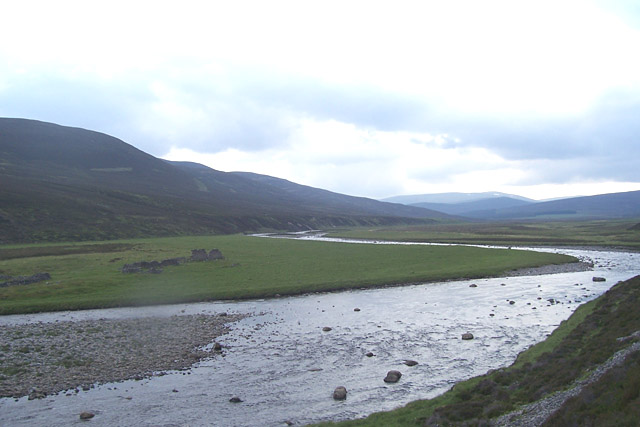 The Braemar area was a Jacobite stronghold and after the '45 there was a garrison of English soldiers stationed here, one of whom was murdered on the hillside up the Allt Cristie. The last remaining occupant of Dubrach was Peter Grant. – locally known as Al' Dubrach (old Dubrach). He lived until he was 110 and was the very last of Bonnie Prince Charlie's Jacobite fighters. In 1822 at the age of 108, he was introduced to King George IV, direct descendent of the Hanovarian "Wee Bit German Laddie".
The Braemar area was a Jacobite stronghold and after the '45 there was a garrison of English soldiers stationed here, one of whom was murdered on the hillside up the Allt Cristie. The last remaining occupant of Dubrach was Peter Grant. – locally known as Al' Dubrach (old Dubrach). He lived until he was 110 and was the very last of Bonnie Prince Charlie's Jacobite fighters. In 1822 at the age of 108, he was introduced to King George IV, direct descendent of the Hanovarian "Wee Bit German Laddie".
The King took him by the hand saying "You are my oldest friend". Peter replied "Na,na yer Majesty, I'm yer aaldest enemy". Hundreds attended the funeral of this great Deeside character in 1824, headed by pipers playing "Wha wadna fecht for Charlie".(1)
There is so much local history in these now remote and lonely glens. Each pile of stones tells its own story.
Heading-on, up Glen Dee by the track on the south side of the river I noted the Dee at this point, starting at Ciste Dhe (Chest of Dee), and for about a further ½ mile up the glen was a series of small falls and long deep pools. It looked tantalising. I would walk back down to here on Saturday after 'emptying' Loch nan Stuirteag, camp and chuck a dry fly over these pools for an hour or two on Sunday morning. That was the plan anyway.
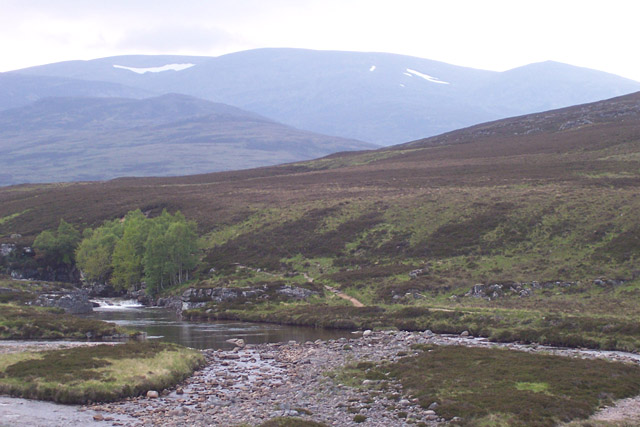 The walk up Glen Dee is interesting. Soon the impressive mountain, The Devil's Point comes into view and the path is good and well drained. Incidentally, "Devil's Point" is not an accurate translation of the Gaelic "Bod an Deamhain". No, that would be "Penis of the Devil". Perhaps John Brown was too embarrassed to give Queen Victoria an accurate translation as they rode thorough the Lairig together on their ponies and anyway, the name "Cock of the North" was a title already taken by the 4th Duke of Gordon!
The walk up Glen Dee is interesting. Soon the impressive mountain, The Devil's Point comes into view and the path is good and well drained. Incidentally, "Devil's Point" is not an accurate translation of the Gaelic "Bod an Deamhain". No, that would be "Penis of the Devil". Perhaps John Brown was too embarrassed to give Queen Victoria an accurate translation as they rode thorough the Lairig together on their ponies and anyway, the name "Cock of the North" was a title already taken by the 4th Duke of Gordon!
With the heavy pack, the outrageous humidity and heat I began to notice a slight "twinge" on the ball of my right foot. Never mind: stop for 10 minutes, cool the feet off in a burn, tape it up and away again. No sign of a blister. I had to stop a few more times to attend to the feet and sure enough by the time I got to my camp site in Glen Geusachan, below the Devil's Point, I had a fair blister to nurse. I had passed several small feeder burns and small lochans on the way and noticed good olive hatches with rising fish, especially on the lochans. The path deteriorates about ½ way up the glen and soon becomes poorly drained and very hard going. The walk in, to this point, had taken about 3 hours.
My camp site, about ? of the way to the loch, beside the Geusachan burn (one of the Dee's more important salmon spawning burns) was delectable. Right below The Devil's Point, a much underrated mountain in my opinion. Were this peak more accessible it would be rated as one of Scotland's finer. It is magnificent, especially in the early morning light with rolling mists
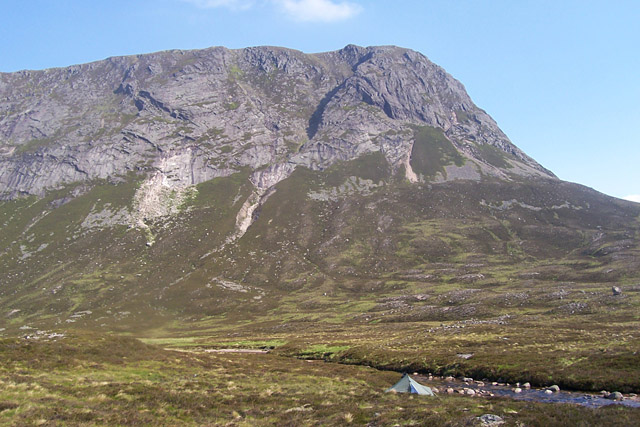 The midgies were out! Not millions but enough to warrant the Autan. Bloody annoying - they don’t usually appear in the Cairngorms until well into June. The good spring had it's disadvantages.
The midgies were out! Not millions but enough to warrant the Autan. Bloody annoying - they don’t usually appear in the Cairngorms until well into June. The good spring had it's disadvantages.
A good nights sleep with an impeccably behaved Dug followed. I was up at 7.30 AM, breakfasted, fishing gear sorted and away before 9 AM.
Glen Geusachan (glen of the pine wood) is the finest high level glen in the Cairngorms. It is superb. Infrequently visited, wild with massive slopes on each side, gigantic slabs running with water and magnificent high corries. The finest of these corries is "Coire cath nam Fionn" - Corrie of the battle of the Fingalians – the heroes of Celtic legend. Right under the summit of Beinn Bhrotain – named after Fionn's hunting hound Brodan – it is clear that this area once held some special significance to the local people. It is sad that all of these past connections are now lost – the systems of old ousted - feudal Norman / Anglo-Saxon principles of land ownership, as alien to the local population as they were to native Americans, forced upon them. People kicked out to make way for the "sports" of the rich. Without a local population to hand on stories, connections to the past are quickly lost. The same thing can be found all over Scotland. Nowadays we have names for such actions. Crimes against humanity and ethnic cleansing.
But enough politics.
Even at this early hour the heat was oppressive; the glen was like an oven. The path up to Loch nan Stuirteag is mostly overgrown, steep and very hard going. It is a fair climb, the loch lies at over 2800 feet. After much grunting, sweating and cursing I crossed the final rise and there it was. The feeling of elation was overwhelming. Even The Dug was excited, she seemed to sense this is what we had come all this way for. The setting is arctic. True tundra, wild, remote and not a beer bottle or empty can to be found anywhere.
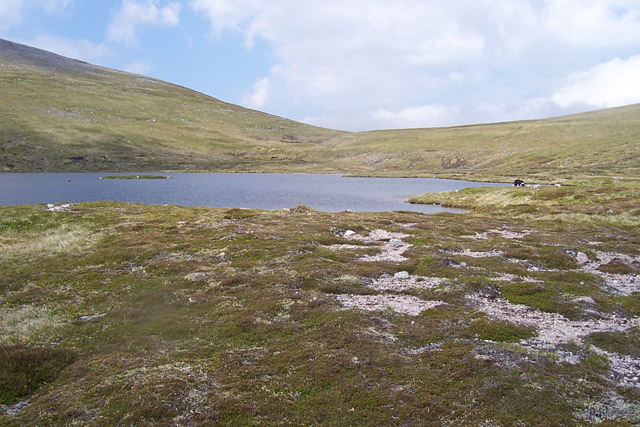 After refreshments and a rest I tackled up. A "Bandy Catcher" on the tail, Bibio on the dropper. As soon as I started fishing I was sure I was not going to catch anything. This loch is incredibly shallow. With Polaroid's I could see it was shallow all over. I doubt if there are any areas deeper than 6 feet. It has decent weed growth and looks like a Caribbean lagoon. The water is of incredible clarity and shallows above wide areas of bleached white granite grit give way to darker areas of slightly deeper water creating the lagoon effect. The water was not at all cold.
After refreshments and a rest I tackled up. A "Bandy Catcher" on the tail, Bibio on the dropper. As soon as I started fishing I was sure I was not going to catch anything. This loch is incredibly shallow. With Polaroid's I could see it was shallow all over. I doubt if there are any areas deeper than 6 feet. It has decent weed growth and looks like a Caribbean lagoon. The water is of incredible clarity and shallows above wide areas of bleached white granite grit give way to darker areas of slightly deeper water creating the lagoon effect. The water was not at all cold.
I fished all round the loch and even on the occasions it fell calm there was no evidence of fish, despite the reasonably abundant fly life on this very warm day.
There are records of fish here in the past. Dr Adam Watson and others saw fish rising many decades ago and local keeper Willie Grant claimed to have caught trout in the 1940's.(2) It may be this loch was seeded with fish in the 19th Century – during the "Victorian sporting era" there was a friendly rivalry between estates: who had the biggest stags, the highest trout etc. But perhaps not. The fish may have died out or there may still be a few! I did not see any in what were really pretty much ideal conditions. In severe winters like some of those we experienced in the 1960s and 70s, a high shallow loch like this would have been frozen for at least ½ the year to great depth. Whether fish could have survived this is anyone's guess. The SE web site claims there are trout and char in this loch – far be it from me to argue with HM fisheries scientists but I do wonder if any of them have actually been there to check? In my opinion, this loch is far too shallow to be typical char habitat.
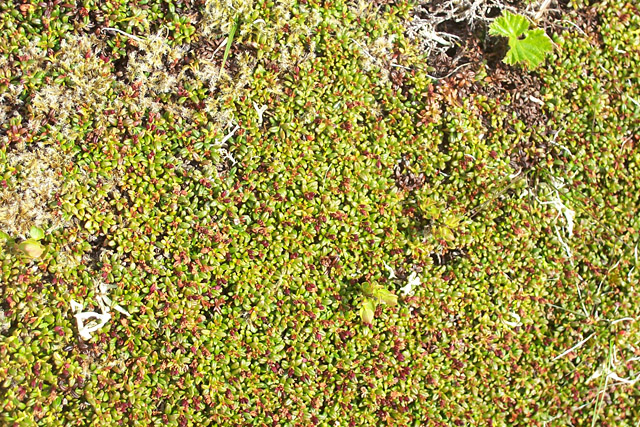 My other great interest in the hills is alpine flora. Not much to note here on the poor granite – I was just a touch early to find Loiseleuria procumbens in flower – a wonderful dwarf azalea making mats a foot or more wide but no more than ¼ inch high and a sight to behold when in flower, covered with small stars in all shades of pink – occasionally white! The plants I found were covered in buds and would have been magnificent one week on. There were a few cloudberry (Rubus chamaemorus) plants in flower.
My other great interest in the hills is alpine flora. Not much to note here on the poor granite – I was just a touch early to find Loiseleuria procumbens in flower – a wonderful dwarf azalea making mats a foot or more wide but no more than ¼ inch high and a sight to behold when in flower, covered with small stars in all shades of pink – occasionally white! The plants I found were covered in buds and would have been magnificent one week on. There were a few cloudberry (Rubus chamaemorus) plants in flower.
I headed back down the glen to the tent and cooked some food. Packed up, shouldered the pack and headed back down towards The Chest of Dee. By the time I was ½ way there I was in trouble. Both feet were now in bad shape. The extreme heat and sweating coupled with the long distances and outrageous pack had my feet looking like two tins of corned beef. Frequent stops, boots off, feet in burn – this brought some relief. It was clear by now that I had best keep going while I could. To camp and risk not being able to walk out on blistered feet next day was not an option. Fishing the Dee with sore feet would not have been much fun anyway. Another problem was dehydration. All the burns (save one) were tepid and foul to drink, I had not taken in nearly enough liquid . If I could have got my hands on the bastards who discontinued "Creamola Foam" I would have murdered them!
I got back to the car at Linn o' Dee at 7.30 PM. feet killing me. Headed down to Braemar and absorbed gallons of Fanta and orange juice.
A fishless expedition but one I would not have missed. Quite wonderful country. There is a tendency to think of the Cairngorms as shapeless big hills. They are anything but. The scale of the landscape, the remoteness and the terrain are quite awesome.
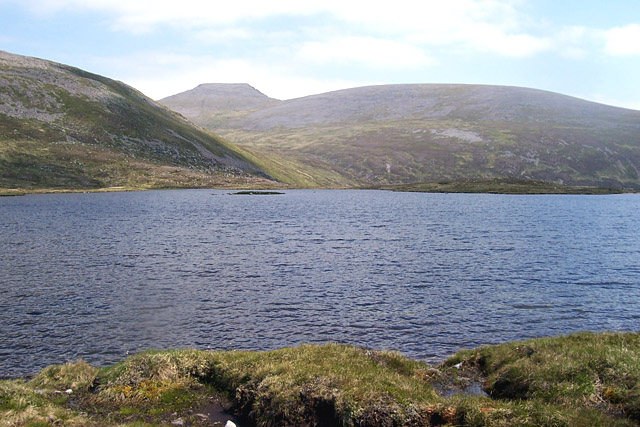 Will I be back to Loch nan Stuirteag? I doubt it, there are just so many other places to go and I am not getting any younger. There is another loch a few miles to the west of nan Stuirteag – Loch a' Cnapan. A touch lower, so it just might have fish in it.
Will I be back to Loch nan Stuirteag? I doubt it, there are just so many other places to go and I am not getting any younger. There is another loch a few miles to the west of nan Stuirteag – Loch a' Cnapan. A touch lower, so it just might have fish in it.
Any takers?
ref: (1) The Cairngorms SMC Guide – Dr Adam Watson 1975
ref: (2) The Cairngorms their natural history and scenery – Nethersole-Thompson, Watson 1974
Fred Carrie started fishing in the mid 1960's, hillwalking in the 1970's and has been combining the two on and off ever since.
Fred runs the successful Wild Fishing Scotland web site and enjoys the hike up to the wild hill lochs as much as the fishing itself. The more uncharitable members of his family and friends say that is perhaps just as well.

